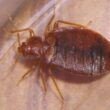Walking out to your garden on a spring morning should be one of life’s simple pleasures. But finding your beautiful pansies nibbled down to stubs can turn that joy into frustration fast. If you’ve been wondering whether deer eat pansies, this guide has your answer.
These graceful visitors love pansies just as much as gardeners do, but understanding why and learning how to protect your flowers can help you enjoy these cheerful blooms all season long.
Do Deer Eat Pansies?
When it comes to the question “do deer eat pansies,” there’s no beating around the bush. Deer absolutely love pansies and will happily munch on these delicate flowers whenever they get the chance. In fact, some gardening experts even call pansies “deer candy” because of how attractive they are to these four-legged visitors.
According to Rutgers University’s deer damage rating system, pansies fall into the “Occasionally Severely Damaged” category, which means they’re definitely on the menu for hungry deer. This rating system ranges from “Rarely Damaged” to “Frequently Severely Damaged,” so pansies land right in the middle zone where deer will eat them when the opportunity arises.
- 360° motion detection with flashing lights and siren
- 5 adjustable modes to target different animals
- Solar-powered with USB backup charging
- Works on cats, dogs, deer, raccoons, skunks & more
The reality is that deer can consume up to 10 pounds of vegetation per day during summer months, so when they find a patch of tasty pansies, they can do significant damage in a single visit. Many gardeners have shared stories of losing entire pansy displays overnight, especially during spring when deer are most hungry after a long winter.
It’s important to understand that there’s no such thing as truly “deer-resistant pansies,” despite what some marketing might suggest. While some pansy varieties might be slightly less appealing than others, any pansy left unprotected in deer country is likely to become a snack eventually.
Why Deer Find Pansies So Tasty
Understanding what makes pansies so appealing to deer can help you better protect your garden. Several factors work together to make these flowers irresistible to browsing deer.
The Perfect Texture and Accessibility
Deer are naturally attracted to tender, succulent growth, which makes pansies an irresistible treat. Unlike tough, woody plants that require effort to chew, pansies have soft petals and tender leaves that are easy for deer to eat. The flowers themselves are delicate and require no real effort to consume.
Pansies also grow close to the ground, making them easily accessible to deer without stretching or straining. This low-growing habit means deer can browse comfortably while staying alert for potential threats. The bright, colorful blooms are like dinner bells for deer, attracting their attention from a distance.
Packed With Nutrition
Pansies are rich in vitamins and minerals such as magnesium, potassium, and vitamin C, which are essential for deer’s survival. These nutrients help strengthen deer bone structure, fight diseases, and promote healthy growth. When natural food sources are limited, deer seek out plants that provide the biggest nutritional bang for their buck.
The blooms themselves attract deer’s attention with their protein-rich benefits, while the high water content and soft texture make them a perfect snack for hungry deer. During spring and early summer, when deer need extra nutrition for antler growth and nursing fawns, these nutritional benefits become even more important.
The edible nature of pansies also plays a role. Humans have been eating pansy flowers for centuries, and deer have figured out that these blooms are not only safe but delicious. The mild, slightly sweet flavor appeals to deer just as it does to people who use pansies in salads and desserts.
When Deer Are Most Likely to Eat Pansies
Deer feeding patterns change throughout the year, and understanding these cycles can help you better protect your pansies during the most vulnerable times.
Spring: The Danger Zone
Spring is when pansies face the greatest risk, as deer seek out tender new growth and young pansies are especially vulnerable when they start developing new buds. After a long winter with limited food sources, deer are hungry and need high-quality nutrition to recover their strength.
During spring, does are either pregnant or nursing young fawns, which significantly increases their nutritional needs. Deer tend to eat whatever is most accessible and nutritious, and during spring and early summer, they actively seek out tender new growth, which includes young pansies. The fresh, nitrogen-rich foliage of newly planted or emerging pansies is particularly attractive during this time.
Summer Feeding Patterns
Summer brings its own challenges for pansy protection. While natural food sources are more abundant, deer continue to seek out the easiest and most nutritious options. Well-watered and fertilized garden plants, including pansies, often provide better nutrition than wild plants that may be stressed by heat and drought.
During summer months, deer go for new growth and can consume freshly blooming plants like pansies, which they prefer and will gravitate toward when they appear. The continuous blooming nature of pansies means there’s always fresh, appealing growth available throughout the growing season.
Fall and Winter Pressure
As natural food sources become scarcer in fall, deer turn their attention to whatever remains available in gardens. While pansies may not be their first choice when acorns and other preferred foods are abundant, hungry deer will certainly eat them when other options are limited.
The timing of deer feeding also matters. Deer are most active during dawn and dusk hours, which means damage often occurs when people aren’t around to deter them. Understanding these patterns can help you time protective measures more effectively.
How to Keep Deer Away From Your Pansies
Protecting pansies from deer requires a multi-layered approach. The most effective strategies combine physical barriers, repellents, and smart garden planning.
- 360° motion detection with flashing lights and siren
- 5 adjustable modes to target different animals
- Solar-powered with USB backup charging
- Works on cats, dogs, deer, raccoons, skunks & more
Physical Barriers That Actually Work
The most effective method for keeping deer away from pansies and other plants is installing a strong, high fence at least 8 feet tall. While this might seem extreme for protecting flowers, it’s the only foolproof method for completely excluding deer from an area.
For gardeners who don’t want to fence their entire property, smaller barriers can protect individual plants or garden beds. Covering pansies with bird netting or fine mesh creates a physical barrier that prevents deer from reaching the plants while still allowing light and water through.
Another creative approach involves using nearly invisible fishing line as a barrier. Stringing monofilament fishing line at different heights around pansy beds confuses deer and makes them uncomfortable about entering the area. The fishing line should be placed at heights of about 2 to 3 feet, creating multiple invisible barriers.
Repellents That Get Results
Commercial deer repellents can be highly effective when used properly. Egg-based products like Deer Away, Bobbex, and Liquid Fence have shown the best results in university studies. These repellents work by creating unpleasant smells and tastes that deer want to avoid.
The key to repellent success is consistent application and rotation. Deer can become accustomed to specific scents over time, so switching between different types of repellents every few weeks helps maintain effectiveness. Most repellents need reapplication every 30 days or after heavy rainfall.
Homemade repellents can also work well and cost much less than commercial products. A simple spray made from hot peppers, garlic, and water can deter deer when applied regularly. Some gardeners have success with soap-based sprays or hanging bars of strong-scented soap near their pansies.
Smart Garden Planning
Strategic placement of pansies can significantly reduce deer damage. Planting pansies close to high-traffic areas like front doors, patios, or frequently used pathways makes deer less likely to browse there. Deer prefer to feed in areas where they feel safe and undisturbed.
Companion planting with deer-resistant plants can also help protect pansies. Surrounding pansy beds with strongly scented herbs like lavender, rosemary, or mint creates a natural barrier that deer prefer to avoid. Marigolds, while not completely deer-proof, are generally less appealing and can serve as a deterrent border.
Consider using elevated planters or hanging baskets for pansy displays in areas with heavy deer pressure. When pansies are out of easy reach, deer are more likely to look elsewhere for easier meals.
What to Do After Deer Damage
Even with the best protection, deer sometimes get through defenses and damage pansies. The good news is that pansies are resilient plants that can often recover from moderate deer browsing.
Assessing the Damage
Pansies grow quickly and respond well to fertilization, so they may recover after being browsed by deer as long as some leaves remain. Plants that have been completely eaten down to the ground are less likely to survive, but those with remaining foliage often bounce back with proper care.
Look for signs that confirm deer were the culprits. Deer browsing typically leaves clean cuts rather than the ragged edges left by rabbits or other small animals. You might also find deer tracks or droppings in the area as additional evidence.
Recovery Steps
After deer damage, remove any remaining damaged or partially eaten plant material with clean cuts. This prevents disease and encourages new growth. Water the affected plants thoroughly and apply a balanced fertilizer to give them the nutrients needed for recovery.
Consider this an opportunity to implement better protection measures before new growth appears. Apply repellents immediately after cleanup, install physical barriers, or relocate plants to more protected areas.
Long-Term Solutions for Deer and Pansies
For gardeners in areas with persistent deer pressure, long-term strategies may be necessary to enjoy pansies successfully.
Alternative Approaches
Some gardeners choose to embrace deer-resistant alternatives that provide similar color and appeal without the constant battle. While these plants may not have the exact same charm as pansies, they can create beautiful displays with much less maintenance and worry.
Motion-activated sprinkler systems provide an excellent long-term deterrent that requires minimal maintenance once installed. These devices startle deer with sudden bursts of water, teaching them to avoid the area without causing harm.
Community Solutions
Working with neighbors on deer management can be more effective than individual efforts. When entire neighborhoods implement similar protection strategies, deer are more likely to move to areas with easier food sources.
Some communities work with wildlife management professionals to address deer overpopulation issues through humane methods. While this won’t eliminate the problem overnight, it can reduce pressure over time.
The Bottom Line on Deer and Pansies
The question “do deer eat pansies” has a clear answer: absolutely yes. These beautiful flowers are among deer’s favorite garden snacks, and any unprotected pansies in deer country are likely to become dinner sooner or later.
However, this doesn’t mean gardeners have to give up on growing pansies. With the right combination of protection methods, consistent application, and realistic expectations, it’s entirely possible to enjoy these cheerful flowers even in areas with significant deer populations.
Success comes from understanding that deer protection is an ongoing process, not a one-time fix. The most successful gardeners use multiple protection methods, stay consistent with their efforts, and adapt their strategies based on what works best in their specific situation.
Remember that the goal isn’t to eliminate deer entirely but to make your pansies less appealing and accessible than other available food sources. With patience and persistence, you can create a beautiful pansy display that both you and the local deer can live with.



